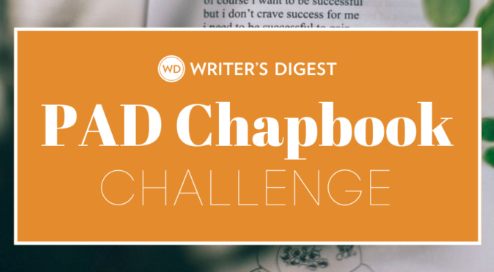6 Steps to Writing a Hauntingly Memorable Haunted House Poem
Poet LindaAnn LoSchiavo, who has written multiple spooky poem collections, shares her six steps to writing a hauntingly memorable haunted house poem. Plus, find 5 haunted house poems to check out.
"Nature is a haunted house -- But art -- is a house that tries to be haunted." – Emily Dickinson
Edgar Allan Poe is credited with inventing the "haunted house genre" with his gothic short story "The Fall of the House of Usher" [1839]. Roderick Usher reveals his suspicions of supernatural involvement to the narrator: This foreboding, dilapidated, sentient mansion, with its "vacant eye-like" windows, controls its inhabitants. Numerous "haunted house" narratives have followed, most memorably The Haunting of Hill House, by Shirley Jackson [1959], renowned for its gothic gloom and an intricate exploration of psychological terror.
Far less attention has been paid to its literary stepchild: the gothic haunted house poem. Since National Haunted House Day will be observed on Friday, October 11, 2024 (always on the 2nd Friday in October), here are six spooky tips for penning Poe-worthy haunted house verses.
6 Steps to Writing a Haunted House Poem
1. Focus on the five senses and vivid imagery
When describing the setting, use sensory language to evoke encroaching menace. Incorporate elements such as decrepit architecture, neglected or sinister gardens, unnerving noises, musty odors, and unexplainable shadows. Descriptive adjectives and metaphors can paint a vivid portrait.
2. Amplify fearfulness and disquietude
Subtle hints and suggestions can amp up an atmosphere of unease and dread. Employ unsettling imagery, such as flickering candlelight, ghostly orbs, whispering, or a cold hand’s caress in a lonely bedroom. Let the reader's imagination fill in the gaps, heightening the sense of mystery and apprehension.
3. Explore themes of isolation and abandonment
Since Gothic literature often explores these themes, portray the house as frozen in time, forsaken, cut off from the world, inhabited by echoes, shadows, and apparitions. Amidst the property’s reclusive solitude, longing, and despair, let the poem depict human fragility now enshrined in eternal neglect and decay.
4. Elevate with symbolism and allegory
Look beyond the haunted house's surface to uncover its symbolic resonance with the protagonist's inner struggles. Utilize potent symbols—chains, mirrors, locked doors—to enrich your verse, adding an enigmatic complexity.
5. Enhance the sonic atmosphere
Utilize techniques such as alliteration, assonance, and onomatopoeia to increase the eerie ambiance. Experiment with repetition and rhyme schemes to create a sense of rhythm that would mimic the pacing of a suspenseful narrative.
6. Master the art of implication
Hint and imply, inviting readers to infer, wonder, or speculate. Creative ambiguity leaves some elements in the poem open to interpretation, shingling it with layers of intrigue and possibility.
In conclusion, immerse your readers in a world of fear and uncertainty, leaving them haunted long after they've finished reading.
5 Haunted House Poems to Check Out
Get in the mood by reading five spooky haunted house poems:
- "The Haunted House" by Thomas Hood [1799 – 1845], a book-length poem written in 1843
- "Low Barometer" by Robert Seymour Bridges [1844 – 1930]
- "Adventure" by R.G. (Raymond George) Gregory [1928 – 2018]
- "Don't Monetize Those Poltergeists" by LindaAnn LoSchiavo from Always Haunted: Hallowe’en Poems [Wild-Ink Publishing, 2024]
- "Footprints in the Snow" by LindaAnn LoSchiavo Video-Poem from Elgin Award winner A Route Obscure and Lonely [Wapshott Press, December 2019].
Check out LindaAnn LoSchiavo's Always Haunted here:
(WD uses affiliate links)
A native New Yorker, Elgin Award winner LindaAnn LoSchiavo (she/her), a four-time nominee for The Pushcart Prize, has also been nominated for Best of the Net, Balcones Poetry Prize, an Ippy, a Firecracker Award, the Rhysling Award, and Dwarf Stars. Her memberships include The British Fantasy Society, HWA, SFPA, and The Dramatists Guild. Latest poetry books: Women Who Were Warned, Elgin Award nominee Messengers of the Macabre: Hallowe’en Poems, and Elgin Award nominee Vampire Ventures. Forthcoming in 2024: Apprenticed to the Night (UniVerse Press) and Always Haunted: Hallowe'en Poems (Wild Ink Publishing).





